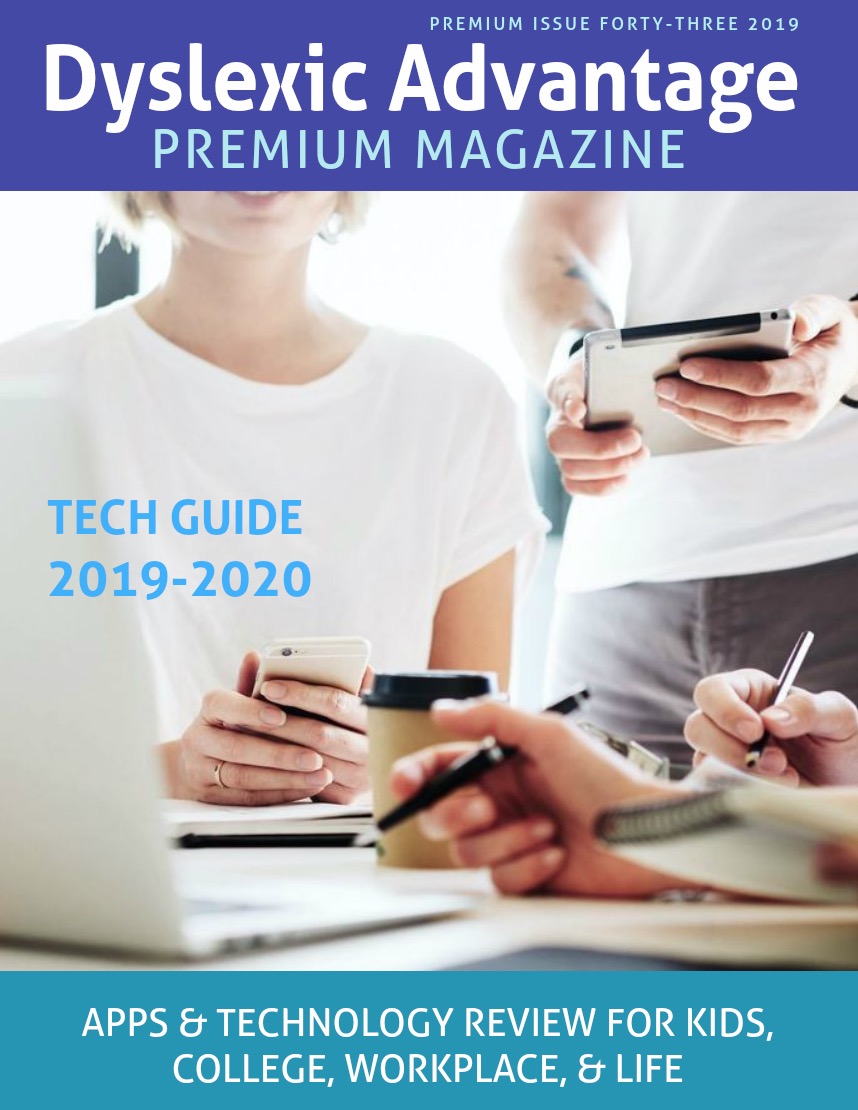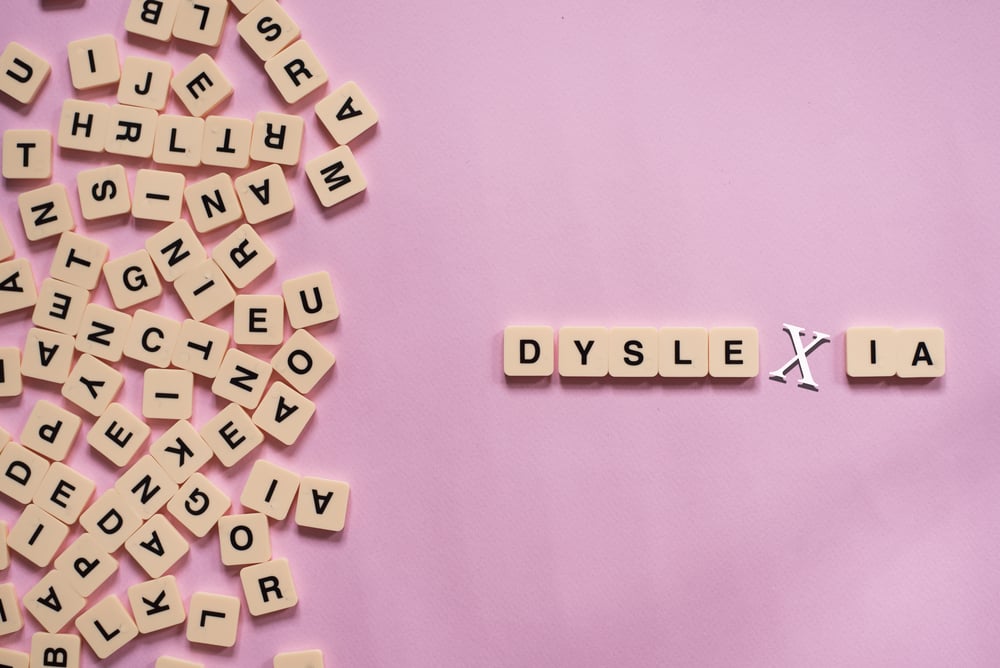This morning, I was interviewing a dyslexic physician, Andrew Newman (we'll share his full story in another issue) and he happened to mention when he was working through Duolingo foreign language learning app that a pop-up occurred and asked him whether he might want...
Dyslexia and Dysgraphia: What Does Writing Look Like? [Premium]
What does the writing look like in students with dyslexia and dysgraphia? IMPAIRED AUTOMATICITY, CAPITAL LETTER INTRUSIONS, and SPELLING ERRORS Students who struggle with handwriting automaticity show irregular shapes and sizes of letters. For example, look at the letter ‘e’ in the spelling test at right. They are very different from one another, showing that the student has not ‘automated’ writing of the letter ‘e’. The more variable the letters are, the more arduous to write anything by hand. Working memory is easily overloaded, and students may be exhausted after writing a few words. The spelling test also shows capital letter intrusions (capital ‘D’), likely to avoid confusing lower case ‘d’ with ‘b’, irregular spacing, and phonological as well as sight word errors. When […]
Don’t Judge Me on My Spelling
"It’s fascinating how much we judge others on their ability to spell – when in reality most of the time this has little effect on our ability to do our work effectively. If you get an email that no one else will see apart from you and the recipient, does it matter...
Dyslexic Advantage Premium TECH Guide 2019-2020
This issue features our largest Premium TECH Guide ever at 54 pages! Become a Premium subscriber at just $5 per month. Individual issues can also be purchased through Dyslexic Advantage apps in iTunes or Google Play. Dyslexic Advantage Premium Apps review includes the best dyslexia apps for iOS and Android in the areas of basic reading, phonological awareness and spelling, reading fluency, free and low cost resources for audiobooks and ebooks, ways to listen including podcasts, read to me books, scanning pens, best apps for writing, note-taking, scanning, and spelling for adult users, best apps for organization and productivity, math, and social and emotional health.
Q: I am an Language Arts Teacher. How Should I Give Feedback About Spelling for Dyslexic Students?
Great question. The degree of accommodations and or modifications should be individualized. SPELLCHECK Severely dyslexic students may need to dictate written work or keyboard work using spelling check. One favorite teacher of ours told us that she had a breakthrough...
When Spelling Words Don’t Stick
From this book from Nancy Mather and colleagues, a 5th grader was shown a word from her adapted spelling list, then asked to write it from memory. Needless to say, the exercise was quite frustrating for the student. From the authors: "Her teacher next showed Nalan the...
Dyslexia at College: THE CHALLENGE OF WRITING [Premium]
As dyslexic college students are entering 2- and 4- year colleges in increasing numbers, questions arise as to the impact of dyslexia-related challenges on essay writing. The National Longitudinal Transition Study-2 had found that although a majority of LD students in high school requested accommodations (91%), only 17% requested accommodations in college. A problem with this situation is that the net result is that written work (especially timed written work) will typically substantially underestimate a student’s fund of knowledge and understanding. A recent study at Oxford Brookes University showed that college students with dyslexia matched their non-dyslexic peers in terms of word diversity, ideas, organization, sentence structure, and even grammar. The tasks in which they scored lower than their peers were so-called “low-level transcription skills” […]
STRATEGIES FOR THE MOST COMMON SPELLING MISTAKES: THE SCHWA [Premium]
Once you learn how to recognize the ‘schwa’, you’ll start recognizing them everywhere! In linguistics, the schwa sound is represented by an upside-down ‘e’ and the mouth position is a lot like the ‘uh’ sound in ‘butter’. It contributes to lots of misspellings in dyslexic students (and actually non-dyslexic students too) so recognizing the patterns can significantly improve all-round spelling performance. STRATEGY 1: EXAGGERATE / MISPRONOUNCE THE SCHWA One surprisingly easy strategy is to exaggerate and deliberately mispronounce a word in order to remember the correct spelling. For instance, the-thee reminds you that the schwa is spelled with an ‘e’. Look at the following 3 objects: monitor, computer, and calendar. To remember -or, -er, and -ar, a student can pronounce monitor as mon-i-TOR, exaggerating the […]
Question: Does Note-Taking with Spellcheck Help or Hinder Students with Dyslexia ? [Premium]
It’s a question that arises commonly – does spellchecking for students help or hinder when it comes to students and spelling? The concern is that allowing students to use spellcheck on a regular basis in the long run may prevent them learning correct spellings. Should age matter or the presence of dyslexia? What about working memory overload or ADD/ ADHD? The issue is not a trivial one especially because of recent efforts to The issue is not a trivial one especially because of recent efforts to put laptops away in college during lectures based on computer-based vs. traditional note-taking by hand (N.B. this study did not specifically assess dyslexic students – see the NPR story also below). A recent paper by Hiscox and colleagues (see below) […]
Top Back to School Apps for Dyslexia [Premium]
EARLY READERS Endless Reader by Originator – Free to try; $5.99-11.99 bundles. iPhone and iPad Great for visual learners. Animations and characters help with sight word learning. Orton Gillingham Card Deck by Mayerson Academy FREE. iPhone and iPad Multisensory card deck with consonants, single vowels, consonant digraphs, vowel teams, vowel + r, short vowel signals, VCe, and common suffixes. Auditory drill. Record and playback to hear pronunciations. Video see and hear sounds. Great phonics practice. Sight Words by Little Speller – FREE Iphone and Ipad All 220 sight words, no-frills program that allows you to create your own sight word lists – lower case or upper case letters. Can allow hints. Sight Words Reading and Spelling by Edoki $3.49 Android. Includes 320 sight words (Fryes + Dolce). […]
Dyslexia Journal Club – Spelling Strategies – What Does Research Say? [Premium]
In a recent paper from Montreal, research tested dyslexic students ages 9-11 to see which spelling strategies were more effective. The most common strategy children use to spell is phonological, whether they are or aren’t dyslexic. The other common strategies children use for spelling are visuol-orthographic, analogy, and backup. The phonological strategy used phoneme-grapheme correspondence. Analogy was based on the use of known words to spell that share orthographic similarities . Visuo-orthographic strategy involved visual and specific properties of words. A backup strategy was defined as using a personal mnemonic device for one specific word. In this research study, students were tested in tests that included spelling to dictation, and written narrative (summary) after being read a story. Spelling words were classified on the basis […]

![Auto-Correct in Foreign Languages: Installing Additional Keyboards [Premium]](https://www.dyslexicadvantage.org/wp-content/uploads/2022/04/Installing-new-keyboard-400x250.jpg)
![Dyslexia and Dysgraphia: What Does Writing Look Like? [Premium]](https://www.dyslexicadvantage.org/wp-content/uploads/2021/10/Dyslexia-and-Dysgraphia-4-400x250.png)



![Dyslexia at College: THE CHALLENGE OF WRITING [Premium]](https://www.dyslexicadvantage.org/wp-content/uploads/2018/01/Screen-Shot-2019-08-30-at-8.43.51-PM.jpg)
![STRATEGIES FOR THE MOST COMMON SPELLING MISTAKES: THE SCHWA [Premium]](https://www.dyslexicadvantage.org/wp-content/uploads/2017/02/Screen-Shot-2019-09-03-at-2.08.42-PM.jpg)
![Question: Does Note-Taking with Spellcheck Help or Hinder Students with Dyslexia ? [Premium]](https://www.dyslexicadvantage.org/wp-content/uploads/2016/10/Screen-Shot-2019-09-09-at-10.45.17-AM.jpg)
![Top Back to School Apps for Dyslexia [Premium]](https://www.dyslexicadvantage.org/wp-content/uploads/2016/08/apps-dyslexia-our-shutterstock.jpg)
![Dyslexia Journal Club – Spelling Strategies – What Does Research Say? [Premium]](https://www.dyslexicadvantage.org/wp-content/uploads/2016/07/shutterstock_357545264.jpg)













